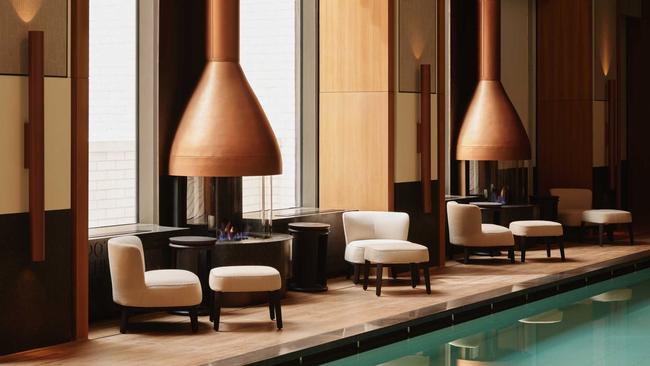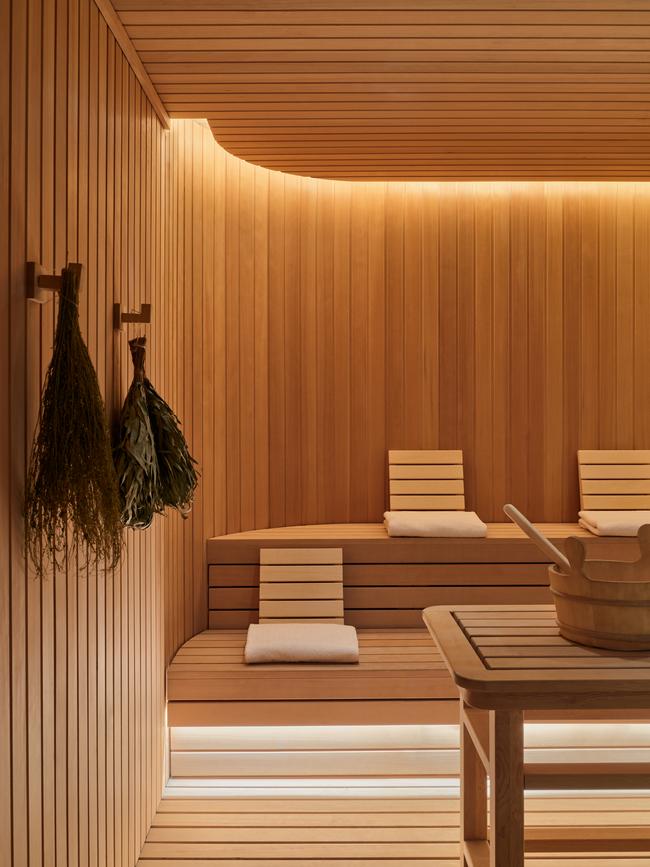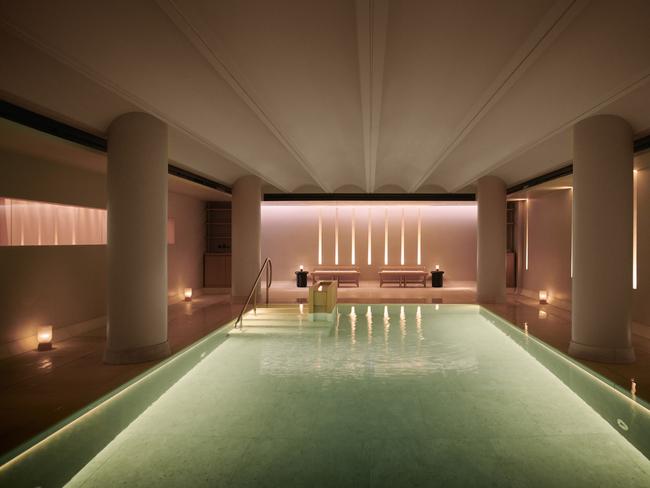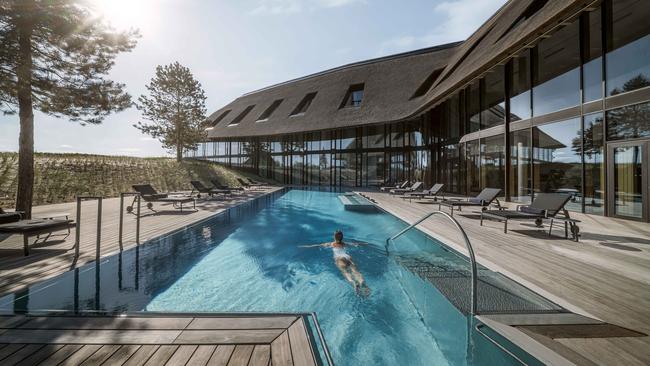Spa culture is on the rise
From modern-day takes on traditional bathhouses to cutting-edge hotel amenities, it’s never been easier to dip a toe in the healing waters.

The things you do in the name of wellness. There I was in Seoul, roaming around a 24-hour Korean spa with little more than a hand towel to my name, hoping I wouldn’t run into my colleagues. We were visiting for Seoul Fashion Week a few years ago, at a time when South Korean culture – from music and beauty to traditional bathhouses known as jjimjilbangs – was trending globally. As well as heading to the style hub of Gangnam with its avant-garde architecture and high density of destination retail stores, an authentic spa experience was top of our list. Dragon Hill Spa was the place to see – and hopefully not be seen.
I might have missed the “Naturalism in the heart of the city” tagline when I booked the recommended sauna, scrub, soak and massage package online. There was certainly no mention of the herb-filled hotpot I was instructed to sit on, with a plastic cape wrapped around me to “keep the steam in”. But it did give me an idea of where Gwyneth Paltrow’s V-steaming sensation may have stemmed from. Dragon Hill was like a Vegas version of wellness: a bizarre fusion of relaxation and entertainment split over multiple floors, where you could play arcade games between saunas, or grab a deep-fried lunch en route to the salt cave. It was a shock to the senses – from the base chakra up. Collectively we were hooked and devised a visiting schedule to maintain a little modesty among friends.
-
Looking to reboot and relax? Discover life-changing wellness retreats and restorative getaways in the latest edition of Travel + Luxury magazine.
-
The traditions of South Korea’s jjimjilbang, Japan’s onsen and Morocco’s hammam have been adopted around the world. They’ve even informed a flurry of recent spa openings across Australia, uniting traditional bathing culture with high- tech infrared and steam saunas: Adytum in Canberra, Alba Thermal Springs and Spa on Mornington Peninsula, Comma in Melbourne and Nature’s Energy in Sydney. Then there’s banya, the Slavic healing ritual that involves being whacked with veniks (leafy branches) in a steaming sauna before plunging into an icy bath. Designed to supercharge circulation, it also serves as the ultimate jet lag or hangover cure and it’s the star attraction at the latest Aman hotel in New York’s historic Crown Building. Its spa covers three floors with the latest treatment trends, from CellAir (intermittent hypoxic training, used by athletes to optimise performance) to IV- infusion rooms, along with perhaps the world’s most expensive bathhouse.

Everyone is upping their spa game. Across the pond, Art Deco institution Claridge’s has opened its first wellness centre after 210 years of trading. It’s set over three floors underground following an ambitious, seven-year dig, made even more impressive by the fact this subterranean engineering feat was executed below the functioning hotel. The Eastern-inspired refuge, designed by architect André Fu, features a bonsai grove, cherry-blossom artwork by Damien Hirst, swimming pool, steam rooms, sauna, state-of- the-art gym and seven treatment rooms. Be sure to book a 90-minute treatment to gain access to the pool. Here, ancient healing rituals meet modern innovation for a menu that includes both Augustinus Bader products and FaceGym facials. The Cryo Contour facial combines FaceGym founder Inge Theron’s signature sculpt massage with a shot of frozen CO2 that sounds a lot more palatable than whole body cryotherapy.

Meanwhile, the style set are flocking to health resort Lanserhof Sylt, which opened last May. Set on an island off the coast of Germany in the North Sea, the complex is the latest and most luxurious detox clinic to practise the Mayr cure by Austrian physician Franz Xaver Mayr. But it’s not for the faint-hearted. Stays start with diagnostics, followed by stringent diet plans. Dubbed the ultimate healing centre, the €120 million resort is a one-stop-shop for cutting-edge therapies for those willing to do the work and fork out the cash.

Certainly, the global wellness market is thriving; it’s expected to reach $US7 trillion by 2025. Hotels and beauty brands, meanwhile, are becoming collaborative bedfellows, with guest bathrooms providing prime real estate for converting new customers. The Aman Group launched a skincare line in 2018, while Soho House recently trialled its new Soho Skin line in-house before launching it at retailer Space NK.
Fashion hotels from Armani to Bulgari have long sported their own branded amenities, but last year brought an industry first when a South Korean hotel was chosen to launch a new K-beauty brand by beauty giant L’Oréal. Called Shihyo, meaning “the wisdom of time” and comprising 24 products with ingredients sourced from local farmers, the brand was debuted at Hotel Shilla.
The days of generic plastic-bottled amenities that reek of men’s cologne are coming to an end as the hospitality world seeks out more sustainable, refillable. products and even complete skincare offerings to impress their increasingly mindful guests. Some local players have tapped cult beauty brands, from Byredo at the InterContinental Sydney to Le Labo at the Park Hyatt Sydney, Aesop at Qualia, and natural skincare brand Hunter Lab at the Hilton. You might return home from a stay with a bigger toiletry bag.
Looking to reboot and relax? Discover life-changing wellness retreats and restorative getaways in the latest edition of Travel + Luxury magazine.

To join the conversation, please log in. Don't have an account? Register
Join the conversation, you are commenting as Logout